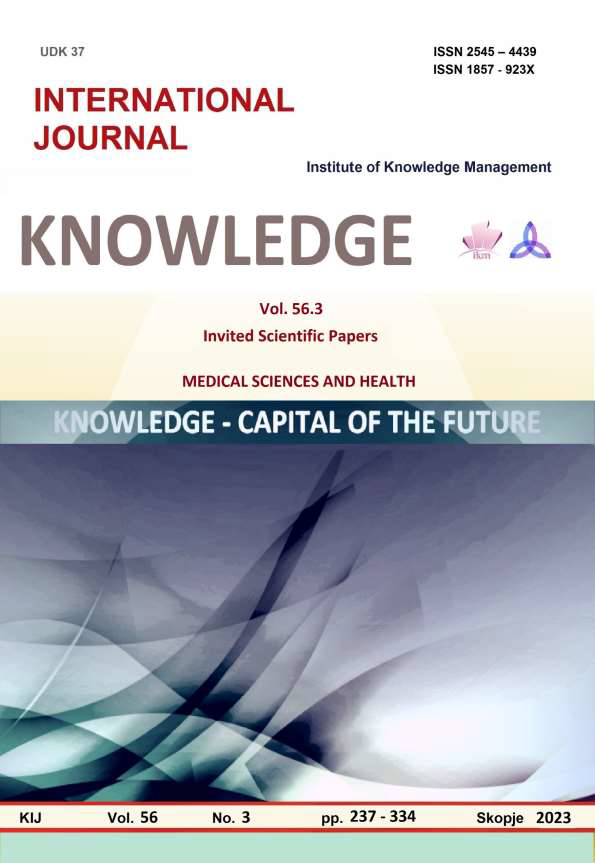ROBOT-ASSISTED MINIMALLY INVASIVE TRANSTHORACIC FUNDOPLICATION FOR HIATAL HERNIA - A NOVEL APPROACH
Keywords:
RATS, fundoplication, Belsey-Mark IV, hiatal herniaAbstract
Robotic-assisted surgery allows surgeons to achieve great results with the benefits provided by the robot,
mainly the enhanced vision and precise movements of instruments. This changed the concept of some of the
operating techniques already established in the field. We present two cases of hiatal hernia repair with the da Vinci
X system using the Belsey-Mark IV technique. The literature review shows that the robotic system is being used
mainly for other types of hiatal hernia surgery and that for the Belsey technique a modified transabdominal approach
is popular. Our patients underwent robot-asisted transthoracic operations with good postoperative results. Although
challenging the robot-assisted minimally invasive transthoracic fundoplication for type 1 hiatal hernia proved to be
applicable with good short-term results, no early complications, fast recovery, and minimal postoperative stay.
Further studies and randomized controlled trials are necessary to test the non-inferiority of the method to
transabdominal laparoscopic and robot-assisted approaches.
References
Arcerito, M., Perez, M.G., Kaur, H., Annoreno, K.M., & Moon, J.T. (2020). Robotic Fundoplication for Large Paraesophageal Hiatal Hernias. JSLS. 2020 Jan-Mar;24(1):e2019.00054. doi: 10.4293/JSLS.2019.00054. PMID: 32206010; PMCID: PMC7065729.
Arcerito, M., Changchien, E., Falcon, M., Parga, M.A., Bernal, O., & Moon, J.T. (2018). Robotic fundoplication for gastroesophageal reflux disease and hiatal hernia: initial experience and outcome. Am Surg. 84:1945–1950. https://doi.org/10.4293%2FJSLS.2019.00054.
Galvani, C.A., Loebl, H., Osuchukwu, O., Samame, J., Apel, M.E., & Ghaderi, I. (2016). Robotic assisted paraesophageal hernia repair: initial experience at a single institution. J Laparoendosc Adv Surg Tech. 26:290–295. https://doi.org/10.1089/lap.2016.0096.
Gehrig, T., Mehrabi, A., Fischer, L., et al. (2013). Robotic-assisted paraesophageal hernia repair: a case–control study. Langenbecks Arch Surg. 398:691–696. https://doi.org/10.1007/s00423-012-0982-0.
Fenton, K.N., Miller, J.I., Lee, R.B., & Mansour, K.A. (1997). Belsey Mark IV antireflux procedure for complicated gastroesophageal reflux disease. Ann Thorac Surg. 64 (3): 790-794. 10.1016/S0003-4975(97)00625-5. https://doi.org/10.1016/s0003-4975(97)00625-5.
Markakis, C., Tomos, P., Spartalis, E.D. et al. (2013). The Belsey Mark IV: an operation with an enduring role in the management of complicated hiatal hernia. BMC Surg 13, 24 https://doi.org/10.1186/1471-2482-13-24.
Morino, M., Pellegrino, L., Giaccone, C., Garrone, C., & Rebecchi, F. (2006). Randomized clinical trial of robot-assisted versus laparoscopic Nissen fundoplication. Br J Surg. 93:553–558. https://doi.org/10.1002/bjs.5325.
Schieman, C., & Grondin, S.C. (2009). Paraesophageal hernia: clinical presentation, evaluation, and management controversies. Thorac Surg Clin. 19 (4): 473-484. https://doi.org/10.1016/j.thorsurg.2009.08.006.
Skinner, D.B., & Belsey, R.H. (1967). Surgical management of esophageal reflux and hiatus hernia: long-term results with 1,030 patients. J Thorac Cardiovasc Surg. 53: 33-54. https://doi.org/10.1016/S0022-5223(19)43239-X.
Stylopoulos, N., & Rattner, D.W. (2005). The history of hiatal hernia surgery: from Bowditch to laparoscopy. Ann Surg. 241 (1): 185-193. https://doi.org/10.1097/01.sla.0000149430.83220.7f





